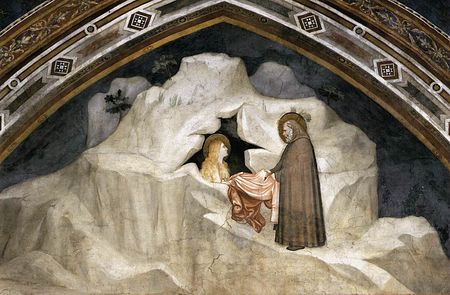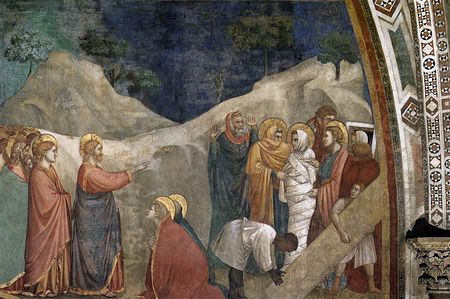Question: Was Mary Magdalene a harlot before Jesus Christ drove seven demons from her? In the West, she is considered to be a repentant harlot, but I have not found anything in the Gospels to support this view. I have only found that St. Mary Magdalene became one of the Myrrh-Bearing women, who faithfully followed Christ, even to His death on the Cross.
Holy Equal-to-the-Apostles Mary Magdalene was born the Galilean town of Magdala (the tribe of Issachar), located on the Western bank of the sea of Gennesaret, near Capernaum. She is mentioned in all four Gospels. After the Lord healed her of the seven devils (cf. Lk. 8:2), she joined the pious women who accompanied the Lord during His earthly life and served Him. She was a witness of the Savior's sufferings on the Cross, and was present at His burial. Before the dawn of the first day after the eventful Saturday, she and other pious women came to the tomb of Jesus Christ in order to anoint His body with sweet spices. Therefore, the Church calls them the Myrrh-Bearing women. The angel first told them of the Lord's Resurrection (cf. Mk. 16:1–8). For her great love and devotion to her Savior, she was worthy to be the first to see the risen Lord. He instructed her to announce His resurrection to the Apostles. St. Mary Magdalene appeared to the Apostles as a bringer of glad tidings. The stichera of Pascha (composed by St. John Damascene) sings of this:
"Come from that scene, O Women, bearers of good tidings, and say to Sion: receive from us the glad tidings of joy of the Resurrection of Christ. Exult, rejoice; and be glad O Jerusalem, beholding Christ the King as a Bridegroom come forth from the tomb."
There is not a single word in the New Testament that would imply that Mary Magdalene was a harlot. This opinion has only taken root in Western culture. A determining stage in the formation of this opinion was the equating of Mary Magdalene with the woman who anointed the feet of Jesus in the house of Simon the Pharisee (cf. Lk. 7:36–50). The Gospel text does not provide any basis for such an assumption. The Lord forgave that woman her sins, saying, Thy faith has saved thee; go in peace (Lk. 7:50). Nothing is said here about the casting out of devils. If the Savior had done that earlier, the why would He not have forgiven her sins at that time? Right after this, the Evangelist Luke talks about (chapter 8) the godly women who served the Lord. The mention of Mary Magdalene is accompanied by the note (out of whom went seven devils), which shows without a doubt that she was being mentioned here for the first time.
 Giotto. Scene from the life of St. Mary Magdalene. Mary Magdalene recieves the garment of Zosima (sic). Source: wga.hu
Giotto. Scene from the life of St. Mary Magdalene. Mary Magdalene recieves the garment of Zosima (sic). Source: wga.hu
 Wooden statue of St. Mary Magdalene by Donatello.
Wooden statue of St. Mary Magdalene by Donatello.
The Orthodox Church strictly adheres in its writings on the life of St. Mary Magdalene to the Gospel testimony and reliable Church tradition. The saint preached the Gospels in Rome. Some researchers suppose that the Apostle Paul is speaking precisely of St. Mary Magdalene in his epistle to the Romans: Greet Mary, who bestowed much labour on us(Rom. 16:6).
During her final years of life, the saint helped the Apostle John the Theologian preach the Gospel in Ephesus. There she reposed. During the reign of Leo the Wise in 886, her holy relics were translated from Ephesus to Constantinople. She is commemorated on July 22/August 4, and on the Sunday of the Holy Myrrh-Bearing Women, the second Sunday after Pascha.
 Giotto. Scenes from the life of St. Mary Magdalene. The Resurrection of Lazarus. Source: wga.hu
Giotto. Scenes from the life of St. Mary Magdalene. The Resurrection of Lazarus. Source: wga.hu
